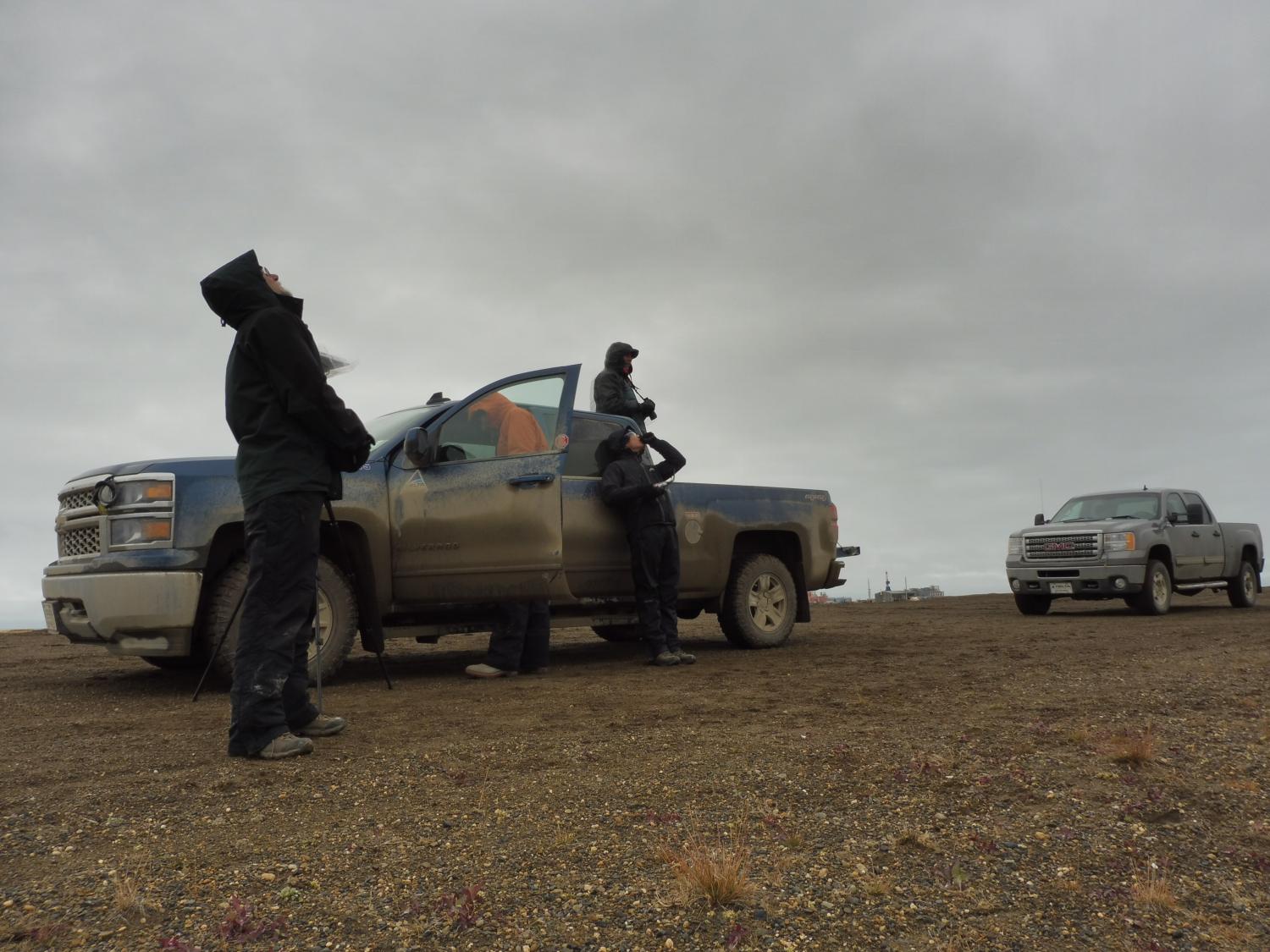"Now we're all muxed up!"

Multiplexered up that is!
Thanks to the heroic efforts of our Boulder colleagues (being at DIA at 6:45am to drop off a package is heroic) and the amazing machine that is commercial air travel, the multiplexers arrived in Deadhorse on Saturday. Due to soggy roads and oil rig movements (the road is only just wide enough for them alone), we were unable to have anyone drive the 40 miles (64km) to pick them up until Sunday afternoon when our friendly AMF-3 operator Wessley King made a run to town. After an evening "build party", the retrofitted DataHawk2s were ready for flight. Unfortunately, 12m/s (27mph) winds with rain and 100m (328ft) cloud ceilings severely limited our flight opportunities for Sunday evening and most of Monday.
Finally, after scrubbing many of the scheduled Monday profiles, the clouds lifted up to 600m (2000ft) just long enough to fly 8:00pm and 8:30pm profiles. With the autopilot set to climb at 4m/s (13ft/s) up to 150m (500ft), both launches were done under automatic control, without even the slightest radar interference. From there, the aircraft profiled up to 300m (984ft), and back down at a nice constant 1m/s (3.2ft/s) several times. Everything was going as planned until the interference struck again and rendered our automatic flight controls useless. A flick of a switch was all it took to restore control to the RC transmitter and the aircraft landed safely back at the groundstation. While this was a major success for the multiplexers, the loss of autopilot at higher altitudes will continue to limit the profiles to lower altitudes than originally planned. As much as this is about not losing aircraft, it is even more about safety; even in restricted airspace on the North Slope of Alaska there are plenty of people and lots of buildings to which a fast-moving 1Kg (2.2lb) UAV would cause significant injury or damage.
Tomorrow, the weather is forecast to improve significantly, so we have 12 profiles scheduled hourly from 8am to 9pm. This is still dependent on the weather cooperating, but with the autopilot doing the flying and the safety of the multiplexer override, these upcoming flights should prove to be far less stressful.
We've made good progress in moving past the problems that have arisen during this deployment and with less than a week remaining until we head home, we're looking forward to collecting more data for a strong finish.
From the plane to the groundstation to bears, there's a lot to monitor while on deployment at Oliktok!
Nate finds the best way to pilot high altitude UAV flights without straining his neck.
The beauty of a North Slope afternoon.

